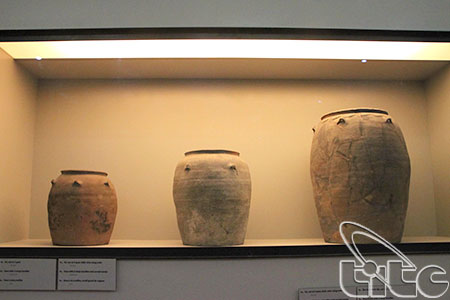Pottery has taken form early in Viet Nam. According to ancient document, pottery appears in Viet Nam ten thousand years ago. Following information is general outline of pottery and ceramics appearance through historic development.

Prehistoric Age
In prehistoric times, ceramic products were understandably coarse as most were mixed by women from sand and other materials. Most of the designs on the surface of the ceramics were created with sticks while the products were still wet. All of the pottery products from this era had useful applications for household duties and cooking.
Bronze Age
Most of the pottery products from the Bronze Age were formed on turn tables and had diverse styles. As well as cooking utensils, there were also artistic ceramics and products for tool production.
The diverse products were decorated with carved images and covered by a different coloured layer of an enamel-like substance. The adornment of pottery products from this period was performed using bronze tools.
Iron Age
Iron Age pottery products developed in all regions of the country. These products were produced at low temperatures using somewhat rudimentary techniques. The form and ornamentation of the Iron Age pottery products was quite unique to this period. This craft developed from traditional experience, and from the influence of the Chinese.
Architectural pottery, including bricks and tiles, also originated during this time and small simple statues of animals, such as pigs and oxen, were introduced.
From Ly Dynasty until now
After more than ten centuries of Chinese domination, the Ly and Tran dynasties saw the reestablishment of national independence. During this period, pottery experienced splendid achievements in quality and diversity through large-scale production.
Basic elements, including the form, decorations, and coloured enamel, were employed to create beautiful products. The painted decorations were simple, but incredibly attractive. Unique carving characteristics developed and various kinds of enamel were applied.
Since the 15th century, ceramic started to bear white enamel with blue designs and fabrication techniques improved.
Nowadays, some localities are still specialized in producing ceramics, including Bac Ninh Province, Thanh Hoa Province, Nam Dinh Province, and Ha Noi.